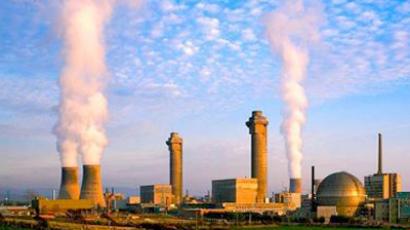Nuclear unclear: Radioactive materials disappear in UK over last decade

The UK’s Health and Safety Executive (HSE) has released papers under the freedom of information act, revealing that radioactive materials have gone missing from businesses, hospitals and universities more than 30 times in the past 10 years.
The papers revealed by the HSE, the UK government’s safety
watchdog, list some big names in British industry as amongst the
culprits including Rolls-Royce Marine Power Operations in Derby,
which makes the reactors for Britain’s nuclear submarines, it was
reported in The Guardian on Monday.
Small pellets of highly radioactive Ytterbium-169 were lost from
the Rolls-Royce marine division, while a 13kg ball of depleted
uranium went missing from the Forgemasters steel works in
Sheffield, The Royal Free hospital in London lost caesium-137 used
in cancer treatment. A report into the incident found that it
“had the potential to cause significant radiation injuries to
anyone handling [it] directly or being in the proximity for a short
period of time.”
In another case, materials containing caesium-137 were lost on a North Sea oil rig by the oil services firm Schlumberger.
While at the site of the former atomic energy research center at
Harwell near Oxford, cobalt 60 was found under a tube store under a
machine during clearance.
Earlier this year a small canister of iridium-192 was stolen
from a van in Lancashire, but was later found at a nearby retail
park almost a month later.
“The unacceptable frequency and seriousness of these losses,
some with the potential for severe radiological consequences,
reflect poorly on the licenses and the HSE regulator. I cannot
understand why it is not considered to be in the public interest to
vigorously prosecute all such offences,” John Large, an
internationally consultant to the nuclear industry, told The
Guardian.
“Such slack security raises deep concerns about the
accessibility of these substances to terrorists and others of
malevolent intent,” he said.
While the HSE successfully prosecuted the Royal Free Hospital,
Shlumberger and the massive Sellafield nuclear plant, other
organizations have got away with written warnings.
In the case of Sellafield, the nuclear reprocessing facility
pleaded guilty at Workington magistrates to sending mixed
general waste, such as plastic, paper and metal from controlled
radioactive areas to the Lillyhall landfill site in Workington when
it should have been sent to the low-level waste repository [for low
level nuclear waste] at Drigg, Cumbria.
The science departments of York and Warwick universities were
luckier; they received written advice over losing radioactive
materials during science demonstrations.
While the Loreto high school in Manchester is being investigated over the loss of americium-241.
“Some of these radioactive sources are very persistent, for example the Royal Free hospital’s lost caesium-137 has a half-life of around 30 years, so it remains radio-toxic for at least 10 half-lives or about 300 years,” said Large, who led the nuclear assessment risk for the raising of the destroyed Russian nuclear submarine Kursk in 2001.
Of over the 30 items which have gone missing, there are
some10-15 different types of radioactivity which will impact human
health in different ways, Nuclear consultant John Large told
RT.
“If you have a reactor accident like Chernobyl for example, then
the first and immediate countermeasures that are required are to
protect individual members of the public against iodine uptake and
the reconcentration of radioactive iodine in the thyroid gland. Of
course the quantities are very much smaller here than you get in a
reactor release, but nevertheless, the loss of iodine in South
Hampton Hospital, where members of the public frequent obviously,
is a very risky affair. This particular type of isotope comes in a
gaseous form, so if it leaks out of its container, it is free to be
respired – taken up, breathed in – by members of the
public.”
Large says that many of the materials, if they fell into the
wrong hands, could easily be deployed in a terror attack on the
public.
“Well if you take one substance for example, cassium [or]
ytterbium, what you need to do there if you were a terrorist and
had evil intent [is] ignite, burn or detonate a conventional
explosive packed near that material to disperse is as a fine vapor
in the air; that makes it respirable and it becomes a
contaminate.
So for example, a scenario in a city would be to actually
explode or burn this material in a high level, let’s say a tower
block. Or in a city like Moscow, to actually burn it on the metro
or tube system and let the trains pump round the radioactive
atmosphere around the metro system. That would be very, very
difficult to decontaminate and control, because the gas would be
pumped round by the train going through the tunnels going through
the tunnels into each station.”














